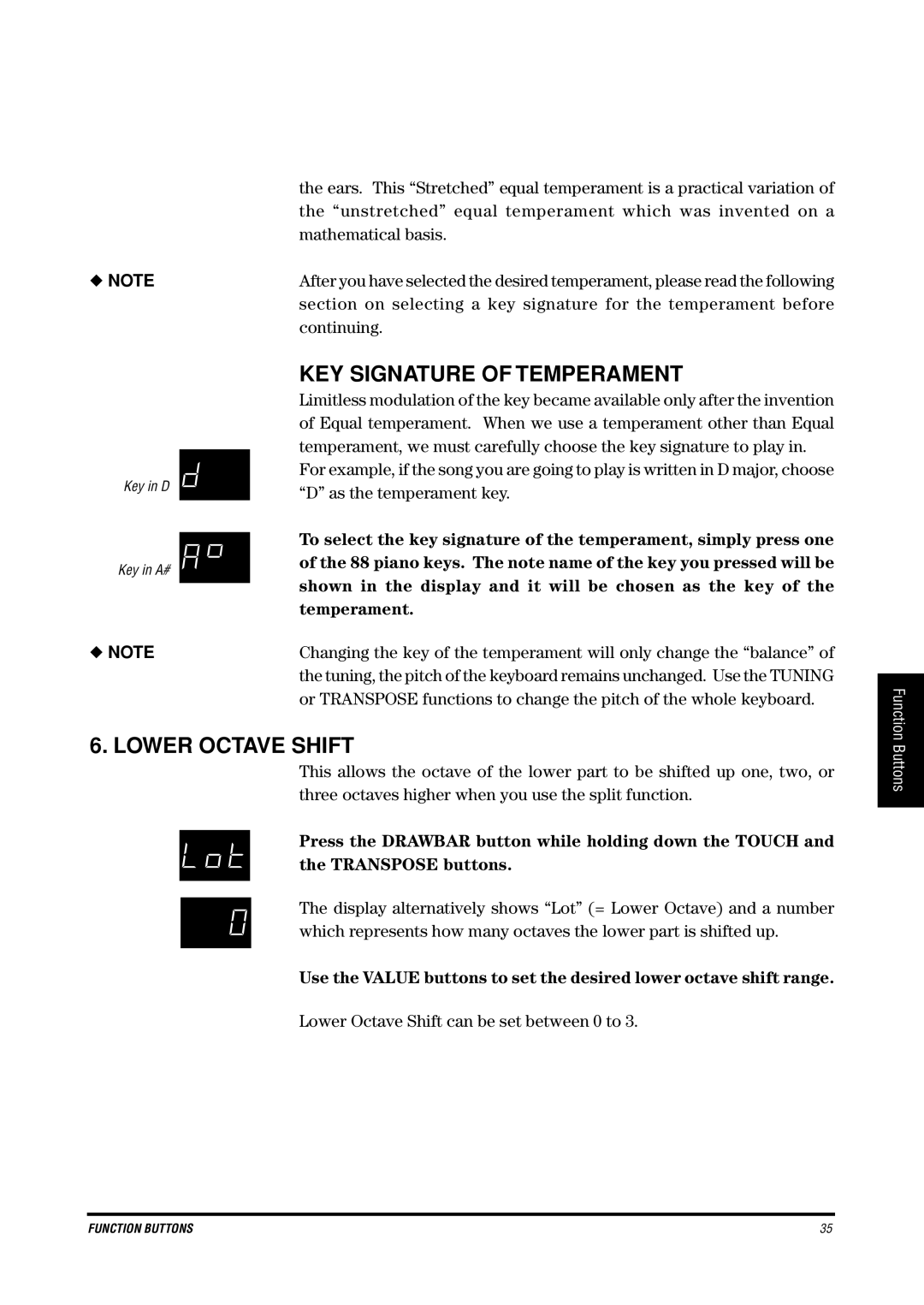
| the ears. This “Stretched” equal temperament is a practical variation of |
| the “unstretched” equal temperament which was invented on a |
| mathematical basis. |
◆ NOTE | After you have selected the desired temperament, please read the following |
| section on selecting a key signature for the temperament before |
| continuing. |
| KEY SIGNATURE OF TEMPERAMENT |
Key in D
Key in A#
◆NOTE
Limitless modulation of the key became available only after the invention of Equal temperament. When we use a temperament other than Equal temperament, we must carefully choose the key signature to play in.
For example, if the song you are going to play is written in D major, choose “D” as the temperament key.
To select the key signature of the temperament, simply press one of the 88 piano keys. The note name of the key you pressed will be shown in the display and it will be chosen as the key of the temperament.
Changing the key of the temperament will only change the “balance” of the tuning, the pitch of the keyboard remains unchanged. Use the TUNING or TRANSPOSE functions to change the pitch of the whole keyboard.
Function
6. LOWER OCTAVE SHIFT
This allows the octave of the lower part to be shifted up one, two, or three octaves higher when you use the split function.
Press the DRAWBAR button while holding down the TOUCH and the TRANSPOSE buttons.
The display alternatively shows “Lot” (= Lower Octave) and a number which represents how many octaves the lower part is shifted up.
Use the VALUE buttons to set the desired lower octave shift range.
Lower Octave Shift can be set between 0 to 3.
Buttons
FUNCTION BUTTONS | 35 |
